Every sommelier in the world knows the basic law - meat is served with red wine and fish - white. This postulate was even proved some time ago by science when Japanese experts confirmed the rule. They analyzed nearly 100 varieties of wine for months and found that white wine sharpens the taste of fish and red makes it rancid and leaves an unpleasant taste in the mouth.
The composition of each wine has iron, but its concentration depends on the variety of grapes, vintage, and place of origin.
In white wine, iron is much less than in the red. That is why it does not intersect with the delicious taste of other products with low iron content as fish and seafood. However, there are exceptions - Chilean red wines are low in iron radicals so they can be drank with fish and seafood, not worsen the taste. The same goes for rosé wines.
By definition, white wine is made from both white and red or pink grapes. The process of getting the wine is fermented after removal of the grape skins. Because of the lack of principles containing colorants, they have a clear color. This is because the majority of grape juice grape varieties, including red, almost colorless.
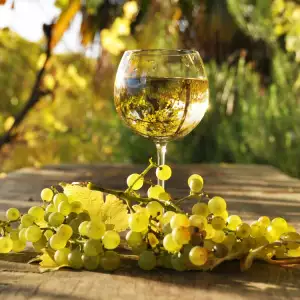
Composition of white wine
White wine, like red contains vitamins, minerals and natural sugars that help our good health. Wine also contains vitamin C, lots of potassium and less sodium. In reasonable quantities it aids digestion by stimulating gastric juices.
100 ml of white wine contains: Calories- 82, Protein- 0.07 g, Carbohydrates- 2.6 g, Fat- 0 g.
Culinary use of white wine
White wines are widely used in cooking. Romans literally drowned their meat in wine, but now add it in a ratio of a maximum of 2-3 cups white wine, successfully added to prepare different sauces. It successfully marinates meat, fish and chicken. The actual cooking of game and other specialties with rabbit meat is a solid addition to the quantity of wine. Normally we used to bake red meat with red wine, but with white, it gets perfect. We offer you a unique recipe for delicious fish in white wine.
Recipe for Roasted carp with white wine
Ingredients: Carp – 1, white wine - 2 cups, oil – by eye, Garlic - 5 cloves, salt, pepper.
Preparation: Thoroughly clean the carp and salt and sprinkle with pepper and salt inside and out. Let it stand for half an hour. Then rub the fish all over with paste made from garlic and salt. Cover them with oil or olive oil and sprinkle again with pepper. In an oiled tray, pour white wine and bake under foil for one hour or less.
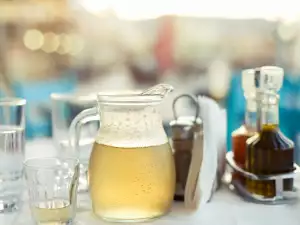
Storing and serving white wine
To give pleasure, a good white wine is very specific on its storage and how it will be served. There are requirements for temperature for serving wine - suitable for white wine when serving, a range from 8 to 12 degrees. From 8 to 10 degrees, young dry wines should be consumed.
Common requirement is that high quality and original bottled wines are offered at a temperature of 10 to 12 degrees. If a restaurant served you good white wine that is not at the temperature required, put it under running cold water and add a few pieces of ice. Thus, in a few minutes it will reach the desired temperature. It’s not very good for wine to undergo sharp tempering, called shocking (fast cooling).
When you open the wine, this should be done carefully as the capsule is cut approximately 5 mm below the top of the bottle. This is done with a corkscrew knife. Expensive bottles of wine, sometimes sealed with wax seal must be brushed clean of the wax. Next step is a clean cloth or paper towel to clean the bottle neck.
Put the corkscrew right in the middle of the cork and then with slight pressure, it is screwed. Sometimes it is possible that some of the cork falls into the wine and to avoid this, it is recommended spin the bottle or its cap when drilling. A fulcrum of the corkscrew to the edge of the bottle is need to pull a cork out.
Sometimes the plug is a tough nut to crack and causes trouble opening. In such cases, there are several options. Perhaps this is because the cork is very large and is not treated with waxes or the bottle’s storage was not correct. It is when a bottle of white wine is kept straight, that the cork dries.
Then, the time to fill cups and enjoy the wine comes. Usually waiters know that the glasses are filled to three quarters of their volume. If it is summer time or the room is very warm, the bottle must be placed in a container to cool.
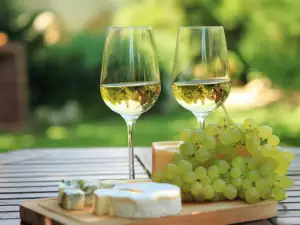
Benefits of white wine
White wine contains large amounts of antioxidants. White wine is beneficial for the prevention of cardiovascular disease, slows progression of Alzheimer's disease. There is evidence that it helps in some cases of mental health problems and is generally good against stress. Glass of white wine just before bed can help to steady your sleep.
Diet with white wine
German scientists say white wine is an indispensable tool in the fight against excess weight. Of course, the miraculous effect can only be achieved with 200 ml of white wine a day, but must be combined with a moderate diet. In fact, the benefit of white wine on weight reduction was found by the ancient Greeks, but nowadays, it is a sound scientific rationale.
Sample daily menu:
Breakfast - fruit, bread with jam, sugar, butter, coffee without caffeine, skimmed milk;
Lunch - tomato, steak with green beans, custard, 1 cup white wine;
Dinner - lentils, omelet with mushrooms, green salad, soaked white cheese + 1 cup white wine;
Dangers of white wine
In the curative effect of quality white and red wine, there is not any doubt. The question, as in most cases, is quantity. The recommended dose is 200 ml per day, although the French raise the standard to 500 ml.
Many studies suggest that wine, although it is considered a relatively light alcohol, unlike whiskey, vodka and so, is still alcohol, which damages the body enough as is.
Like other alcohols, white wine causes cardiomyopathy and widespread heart disease. Moreover overdoing the grape elixir can lead to liver disease, fluctuations in blood, and of course alcoholism that can be a disease itself, expressed in terms of the person being banned from continuing consumption of alcoholic beverages.
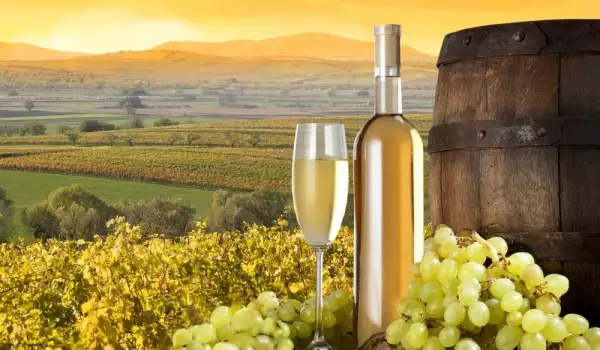
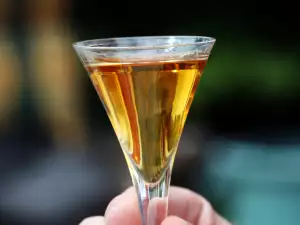

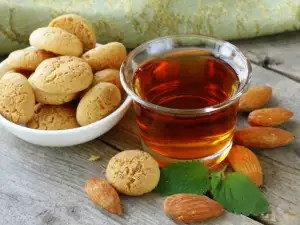
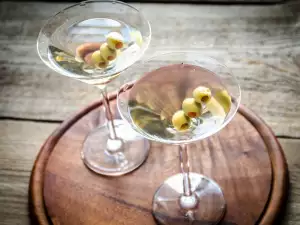
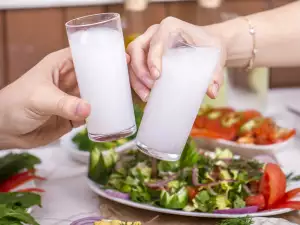
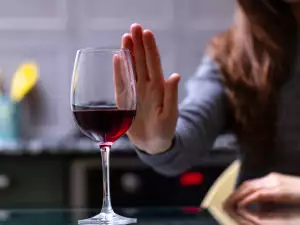

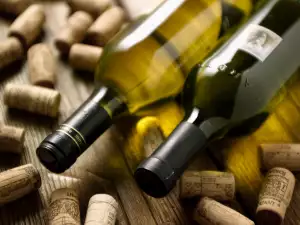
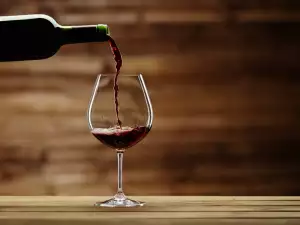
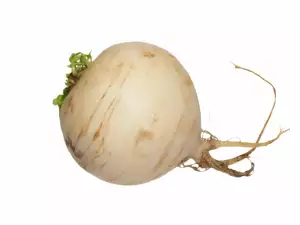
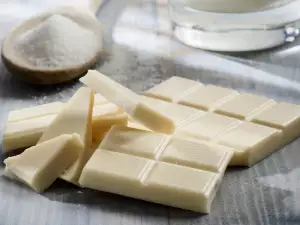
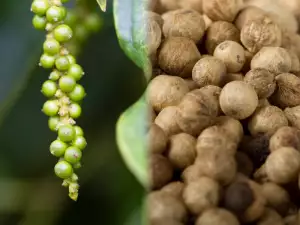


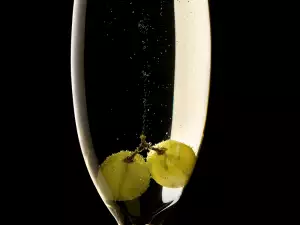




Comments